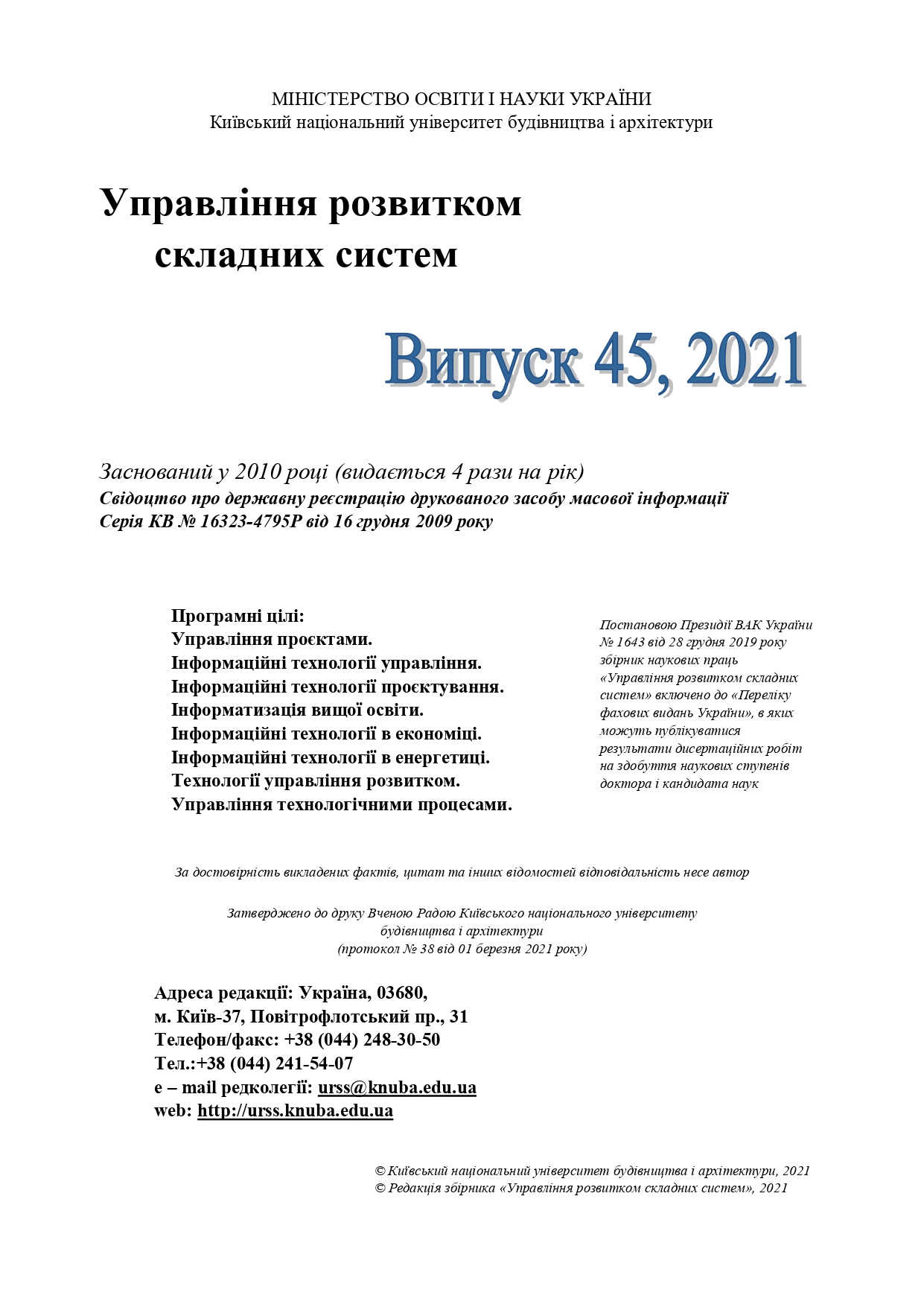ANALYSIS AND PRIORITIZING RISK MINIMIZING TECHNIQUES OF IT PROJECTS
DOI:
https://doi.org/10.32347/2412-9933.2021.45.6-12Ключові слова:
risk management, information risk sourcing, the project risk, company risk, analysis of risk prioritization, response to risk, a technique to minimize riskАнотація
This article is devoted to the risk analysis of IT projects. The article defines the risks of IT projects, classifies the key risks of IT projects and identifies the main sources of risks of IT projects. The analysis of risks of IT projects at introduction of information management system in realization of projects of the company is also presented. The possibility of risks of IT projects during the implementation of the management information system in the implementation of the company's projects is analyzed. And also the ways of minimization of occurrence of risks of IT projects at introduction of information management system in realization of projects of the company are offered. Under ideal circumstances, in modern organizations, project implementation reduces risks to zero. At the same time, in modern realities, it remains necessary to take into account risks and manage them as part of the organization when implementing projects. Nevertheless, risk minimization is effective for the dynamic growth of an organization or institution when implementing projects. The current trends in information projects in today's competitive world are fundamental and necessary for any project-oriented organization to manage risks in information outsourcing projects in an ideally complex task. Thus, this article examines the main factors that lead to the emergence of risks, based on modern scientific sources from leading researchers in the field of project management, taking into account the peculiarities of developing an optimal risk management system in an organization when implementing projects, as well as the implementation of such a system under various scenarios of projects’ implementation in organizations. A structure aimed at improving the risk management system in organizations during project implementation is also proposed. The study found that prioritization in the consideration of project risks, as well as risk factors, helps to correlate the risk of the project and the risk of the company itself. Prioritizing the response to risk factors and their strength of influence, considering the time, volume and quality of risks are of paramount importance for the dynamic growth of the organization and allow to conduct a matrix analysis of risks, and then propose ways to minimize risk.
Посилання
AL Qatawneh, A.S. (2016). The role of work teams’ empowerment in crisis management: A case study of Jordanian electricity distribution company – Karak Governorate. International Business Research, 9(6), 10. URL: https://doi.org/10.5539/ibr.v9n6p10.
Strang, K., Korstanje, M. & Vajjhala, N. (2018). Research, practices, and innovations in global risk and contingency management. IGI Global.
Boloș, M., Bradea, I. & Delcea, C. (2019). Neutrosophic portfolios of financial assets. Minimizing the risk of Neutrosophic portfolios. Mathematics, 7 (11), 1046. https://doi.org/10.3390/math7111046.
Wieteska, G. (2020). Undefined. Operations and Supply Chain Management: An International Journal, 359–374. URL: https://doi.org/10.31387/oscm0430276.
Zabalawi, E.A., Bakhouche, A. & El Chaar, R. (2021). Risk management. Advances in Business Strategy and Competitive Advantage, 206–225. URL: https://doi.org/10.4018/978-1-7998-4195-1.ch010.
Mahmud, S., Rahman, M.S., Hasan, M.M. & Hossain, M.M. (2016). Minimizing the bullwhip effect in a single product multistage supply chain using a genetic algorithm. Uncertain Supply Chain Management, 137-146. URL: https://doi.org/10.5267/j.uscm.2015.11.001.
Information technologies. [Electronic resource]. URL: https://uk.wikipedia.org/wiki/%D0%86%D0%BD%D1%84%D0%BE%D1%80%D0%BC%D0%B0%D1%86%D1%96%D0%B9%D0%BD%D1%96_%D1%82%D0%B5%D1%85%D0%BD%D0%BE%D0%BB%D0%BE%D0%B3%D1%96%D1%97.
Coburn, A. «People are both nonlinear and the most important components in creating software», Humans and Technology Technical Report, Oct.1999 (Russian translation by K. Maksimov, A. Maksimov URL: http://www.maxkir.com/sd/people_as_nonlinearRUS.htm) 25.
A Guide to the Project Management Body of Knowledge (PMBOK® Guide). (2017). Six Edition. USA. PMI, 574.
Yaroshenko, F.A., Bushuev, S.D. & Tanaka, H. (2011.) Management of innovative projects and programs based on knowledge system P2M: Monograph. Kyiv, Ukraine, 263.
Mazur, I.I., Shapiro, V.D., Olderogge, N.G. Polkovnikov, A.V. (2010). Project management. Under general ed. I.I. Mazur and V.D. Shapiro. Мoscow : Publishing house "Omega-L", 960.
Savina, O.Yu. (2017). Features of portfolios projects of science-based enterprises and their management peculiarities Management of Development of Complex Systems, 30, 62–74 [in Ukrainian].
Danchenko, O.B., Bielova, O.I. & Safar, H.M. (2019). Ensuring effective quality management of trade enterprises through the use of the concept of TQM. Scientific notes of KROK University, 2 (54), 90–96. DOI: 10.31732/2663-2209-2019-53-90-96.
Safar, H.M. & Bielova O.I. (2020). Main components of Total Quality Management in projects of Libyan company “LISCO”. Materials of the Fifth International Scientific-practical Conference “Project, Program, Portfolio. P3M Management”, Odesa National Polytechnic University, Department of Project-based Learning in IT (04 – 05 December 2020), Book 1, Odessa, 98–101.
Bielova, O., Elbaruni, J.E. & Safar, H.M. (2019). Benefits of integrating the Total Quality Management and Management Information System into Project Management. Collection of scientific works of ChSTU. Series: Economic Sciences. 2, 5–9.
Kolomytseva, O., Verenych, O., Danchenko, O., Bielova, O., Palonna, T. & Pepchuk, S. (2020). Forming of integrated understanding of project terms: Faulk’s algorithm as one of the formalized approaches. Entrepreneurship and Sustainability, 7(4), 3215-3225. URL: https://doi.org/10.9770/jesi.2020.7.4(42).
##submission.downloads##
Опубліковано
Як цитувати
Номер
Розділ
Ліцензія
Авторське право (c) 2021 Jalal Elbaruni, Olena Bielova , Viktor Melenchuk

Ця робота ліцензується відповідно до Creative Commons Attribution-NonCommercial-NoDerivatives 4.0 International License.

